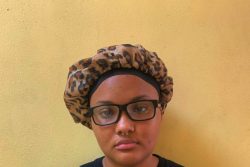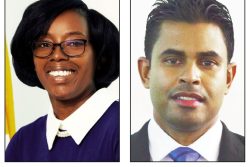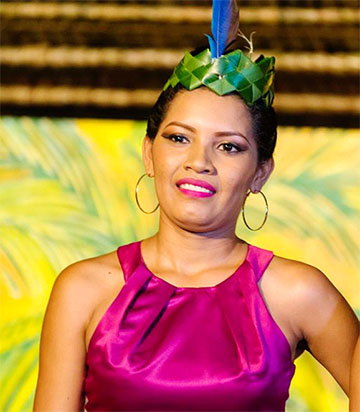By Dr. Mellissa Ifill
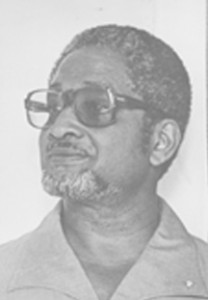 This article is the first of two that examines the circumstances surrounding and the implications of the formation of the PNC-UF coalition that formed the government in the immediate pre-and post independence period. This first instalment briefly highlights the demise of the nationalist movement that emerged during the late 1940s and the consequential introduction of mass ethnicised politics. While the latter alliance was not the first in the post Waddington constitutional era, it was the most crucial and had far reaching implications and consequences on ethnic relations and democratic governance after independence. Undoubt-edly, the PNC/UF alliance was not based on a genuine commonality of ideology and philosophy, but seemed to be an expedient alliance to prevent Jagan from becoming the leader of independent Guyana. Moreover, the withdrawing colonial power and the regional superpower, Britain and the United States respectively together played a crucial role in facilitating this alliance in their bid to ensure that another Cuba did not emerge in the hemisphere, courtesy of Cheddi Jagan.
This article is the first of two that examines the circumstances surrounding and the implications of the formation of the PNC-UF coalition that formed the government in the immediate pre-and post independence period. This first instalment briefly highlights the demise of the nationalist movement that emerged during the late 1940s and the consequential introduction of mass ethnicised politics. While the latter alliance was not the first in the post Waddington constitutional era, it was the most crucial and had far reaching implications and consequences on ethnic relations and democratic governance after independence. Undoubt-edly, the PNC/UF alliance was not based on a genuine commonality of ideology and philosophy, but seemed to be an expedient alliance to prevent Jagan from becoming the leader of independent Guyana. Moreover, the withdrawing colonial power and the regional superpower, Britain and the United States respectively together played a crucial role in facilitating this alliance in their bid to ensure that another Cuba did not emerge in the hemisphere, courtesy of Cheddi Jagan.
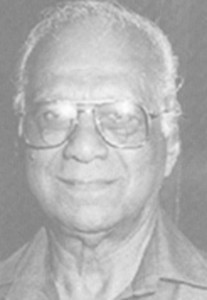 Coalitions and alliances were stimulated by the Waddington Constitution that was adopted in 1951 in British Guiana. This constitution provided for universal adult suffrage for individuals over the age of 21 but it did not allow for independents to contest the elections. Political actors thereafter formed themselves into political parties and also established political alliances between parties with the hope to securing a majority in the legislature. The scale and significance of political party alliances during the decade prior to Guyana’s independence were quite vast, particularly after the split in the PPP in 1955 and alliance building represents a critical component of Guyana’s decolonisation experience.
Coalitions and alliances were stimulated by the Waddington Constitution that was adopted in 1951 in British Guiana. This constitution provided for universal adult suffrage for individuals over the age of 21 but it did not allow for independents to contest the elections. Political actors thereafter formed themselves into political parties and also established political alliances between parties with the hope to securing a majority in the legislature. The scale and significance of political party alliances during the decade prior to Guyana’s independence were quite vast, particularly after the split in the PPP in 1955 and alliance building represents a critical component of Guyana’s decolonisation experience.
The PNC/UF coalition came in the wake of the disintegration of the unified nationalist movement of the late 1940s and early 1950s that commenced under the leadership of the Political Affairs Committee (PAC), which had been formed by Cheddi and Janet Jagan, J. Hubbard and Ashton Chase. The PAC had transformed itself into a political party, the PPP, and had placed the two most appealing Indian and African leaders, namely Cheddi Jagan and Forbes Burnham as leaders and chairman respectively of the party in order to show the unity of the two main ethnic groups in the party and in the anti colonial struggle. It was anticipated that for the 1953 elections, by joining forces, they would achieve success since Jagan had strong support in the rural areas among the East Indian population and Burnham had strong support among the urban African population.
For the first time in the history of British Guiana, genuine, though not completely all-embracing, democratic electoral practices were witnessed after the constitution underwent notable amendment in 1953. Universal adult suffrage (21 years and above) was instituted. A bicameral legislature was established, comprising a 24 member elected House of Assembly and a 9 member nominated State Council. Elected members no longer had to demonstrate any property or income credentials however they were still required to be literate in English. These democratic electoral changes to the constitution made it possible for the PPP to gain significant internal political power since they won the election by a simple majority of 51 percent of the vote and secured 18 of the 24 seats in the lower legislative chamber. The only departments outside the purview of the PPP were defence and foreign affairs.
The colonial leaders, the multinational corporations and the middle class whose interests were potentially under threat from an independent Guyana under the PPP were extremely agitated about an impending communist danger and one hundred and thirty three days after the PPP formed the government and took up political office, the Chief Secretary, Mr. John Gutch in a public broadcast, advised the Guianese community that: “Her Majesty’s Government had decided that the constitution of British Guiana must be suspended to prevent communist subversion of the government and a dangerous crisis both in public order and in economic affairs … the Governor has therefore been given emergency powers and has removed the portfolios of the Party Ministers.” Mr. Gutch further stated that “the faction in power have shown by their acts and their speeches that they are prepared to go to any length including violence, to turn British Guiana into a communist state”.
This suspension widened the cracks that had already been evident to the colonial officials between the Jagan/Burnham alliance and the political unity soon unravelled with Jagan and Burnham involved in machinations and manoeuvrings to acquire maximum support from the members.
Eventually, Burnham’s PPP faction broke away in 1955. This alliance disintegrated for several reasons, some of which will be briefly discussed.
First, both Jagan and Burnham had great political ambitions and wanted to be leader of the party. Jagan had greater political support largely due to the greater percentage of Indian rural voters relative to African urban voters and he accused Burnham of wanting glory and power without putting in the hard work. One of Burnham’s greatest assets was his oratorical gift, and this he used to great effect in the towns but he was criticized for not using it in the country areas.
The unity also disintegrated over the question of ideology. While Jagan appeared to embrace a radical variant of socialism, Burnham’s embrace seemed more moderate and pragmatic in the Cold War circumstances. As stated in one Washington Intelligence Report, “The PNC in office would probably feature a more moderate policy of domestic socialism than the PPP. Likewise, in the foreign field it would also be neutralist but somewhat less pro-Bloc than the PPP” and with respect to Jagan and the PPP, the Report stated “The PPP leadership has a clear record of Communist association and of Communist-line policies … We believe, however, that Jagan is a Communist, though the degree of Moscow’s control is not yet clear. A Jagan government in the post independence period would … probably lean in the Soviet direction … Its domestic program would be radically socialist and reformist.” Burnham’s moderate stance on a number of issues had undermined his credibility to the most radical members of the original PPP. Burnham however argued that Jagan was uncompromising and if unconditional support was not given to every proposal the dissenting voices were seen as traitors. As expressed by Burnham not long after the split, “If an individual did not agree in every minute detail with the ideological convictions of the dominant section in the executive, he became a stooge, a fraud, and coward, a sell out, and tolerating him was a necessary evil while the contempt and disregard for him was very thinly veiled, if at all.” This treatment of dissidents was noted by the Governor of the colony in 1959 who noted in a letter to the Secretary of State for the Colonies that “Dr. Jagan himself with his insistent wife at his elbow dominates his party.
Major decisions are made to his dictation in an inner council usually consisting of himself, his wife, Mr. Benn and Mr. Ram Karran. The party executive is then required to endorse these decisions. Those who are brave enough to resist or question are discredited among the rest of the party.”
Third were ethnic fears of domination and subordination. The ethnic division of labour in the society, particularly between Africans and Indians was starting to hinder the political attempts to build links between the different ethnic groups. The character of African socio-economic participation and their labour initiatives did not coincide with a very radical strategy. Burnham was cognisant of the fact that many Africans were climbing the socio-economic ladder by increasingly taking advantages of opportunities within the system and consequently they were unwilling to support fundamental changes. Burnham was aware that his connection with a party that embraced a radical communist ideology turned off many potential African middle and lower-middle class supporters and he appeared to distance himself from the more extreme ideological declarations. However, the PPP relied greatly on East Indian support, and the latter group comprised 46 percent of the population and resided primarily in the rural areas (over 80 percent). The East Indian population had been witnessing speedy numerical growth, increasing from 163 434 in 1946 to 230 250 in 1956. While the total labour requirements decreased between 1956 and 1966 from 19, 523 to 14 322, the East Indian population grew by in excess of 100 000 during the same period. In other words, the rapid population growth among Indians could not be accommodated by the sugar plantations which in any event were increasingly employing capital intensive technology thus further decreasing labour requirements. The reality of decreased plantation employment, combined with the increase in educational provisions among the East Indian population resulted in many Indians migrating to the towns, which had hitherto been dominated by Africans, to look for jobs.
Any residential shift of Indians into the towns would undoubtedly endanger African welfare and the later population was already beset by unemployment and underemployment problems. African politicians therefore needed to take a stance that would reassure Africans that their interests were not being sacrificed to satisfy Indian demands for fundamental changes in colonial policy.
Percy Hintzen thus persuasively argues that although the split initially appeared to be premised on ideological grounds with non-Marxist East Indians leaving with Burnham and Marxist Africans staying with Jagan, it was more the pressures emanating from their respective ethnic communities to secure their interests that resulted in the split of the PPP leadership and ultimately the party in 1955 and this was borne out after the most prominent Africans left the PPP, charging Jagan of racial politics.
The 1957 elections demonstrated clearly which PPP the voters supported with the Jaganite faction winning 48 percent of the vote while Burnham, primarily on the basis of lower class African support got 26 percent of the vote. Jagan clearly had the support of Indians while Burnham needed to consolidate his African base. Burnham’s PPP then merged with the National Democratic Party (NDP) to form the People’s National Congress in 1957 and the PNC merged with the United Democratic Party (UDP) in 1959. The NDP and UDP were largely conservative middle class African based parties and did not embrace socialism. The PNC’s willingness to coalesce with parties that embraced contrasting ideologies was again seen in the negotiations that ultimately failed to establish a grand alliance with a ‘Third Force’ led by the ultra conservative capitalist businessman Peter D’Aguiar and including the National Labour Front and the Progressive Labour Party.
The PNC’s interest in the Third Force was designed to broaden the African base of the party to include Portuguese, Chinese and the Indigenous population. Additionally, there were a number of Indian businessmen who did not embrace Jagan’s ideology who were part of this third force and Burnham was therefore hoping to present a multi-ethnic front to counter Jagan’s perceived pro Indian party.
This first attempt by the PNC and the group that later formed the United Force failed because the two could not agree on the leadership question and established preconditions. Among others, Peter D’Aguiar’s group proposed that they would fund the party and that D’Aguiar should head the alliance for a minimum of 18 months and that a 15 member ruling committee be created, nine of whom should come from Burnham’s PNC and six from D’Aguiar’s group. The PNC meanwhile insisted that Burnham would lead any alliance between the two groups and accused D’Aguiar of trying to ‘buy’ the party. The PNC also insisted on a form of proportional representation as proposed by the Constituent Assembly and internal self-government with the aim of joining the West Indian Federation.
In the wake of these failed negotiations, the United Force was established and was headed by D’Aguiar. The formation of the UF in 1960 signalled the comprehensive interconnection between ethnicity, the labour sector and ideology. The prime supporters of the United Force (UF) were the prominent businessmen and middle and upper level workers in the private sector who were of Portuguese, Chinese and Indigenous extraction and the welfare of these three groups was neglected with the political organisation of Africans and Indians.
By the end of 1964 however, the PNC and the UF had established a coalition. The next instalment discusses the changed circumstances that resulted in the two parties forming an alliance and the difficulties encountered by the coalition resulting in its demise within two years after independence.



